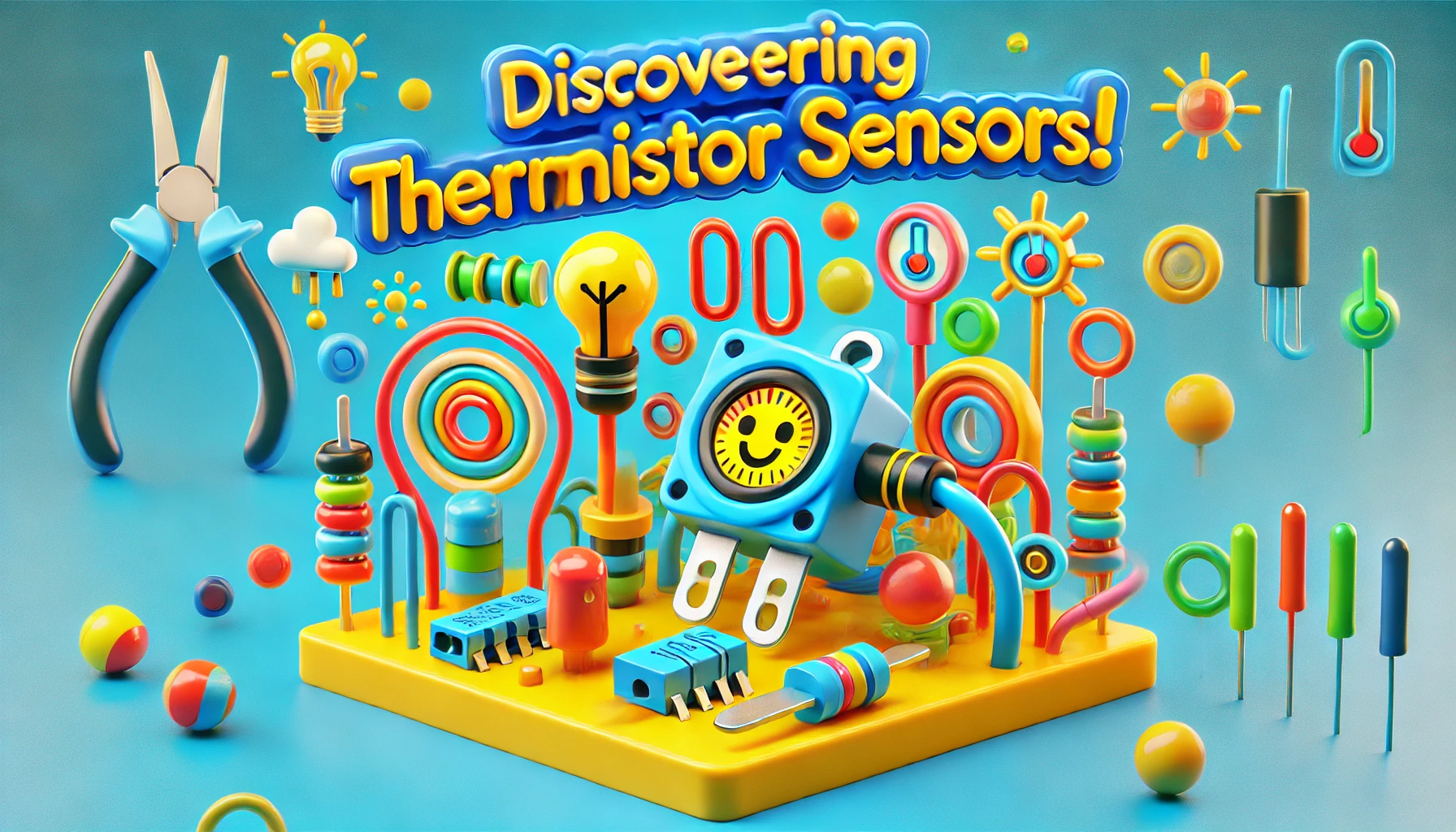Comprehensive Guide to Thermistor Sensors: Types, Applications, and Comparisons
Thermistors are essential components in temperature sensing applications. Known for their precision and sensitivity, they play a crucial role in various industries. This article aims to provide a comprehensive understanding of thermistors, suitable for research students and enthusiasts looking to deepen their knowledge.
What is a Thermistor?
A thermistor is a type of resistor whose resistance varies significantly with temperature. The name “thermistor” is derived from a combination of the words “thermal” and “resistor.” Unlike standard resistors, thermistors are highly sensitive to temperature changes, making them ideal for precise temperature measurement.
Types of Thermistors
Thermistors are broadly classified into two types based on their temperature coefficient:
- Negative Temperature Coefficient (NTC) Thermistors: In NTC thermistors, resistance decreases as temperature increases. They are commonly used for temperature measurement and control.
- Positive Temperature Coefficient (PTC) Thermistors: In PTC thermistors, resistance increases with an increase in temperature. These are often used as overcurrent protectors or resettable fuses.
How Thermistors Work
Thermistors operate based on the principle that their electrical resistance changes with temperature. The relationship between resistance and temperature in thermistors is non-linear and can be described using the Steinhart-Hart equation for more precise calculations:
where:
- is the temperature in Kelvin,
- is the resistance,
- , , and are the Steinhart-Hart coefficients.
Applications of Thermistors
Thermistors are widely used in various applications due to their high sensitivity and accuracy:
- Industrial Uses: Monitoring and controlling temperatures in manufacturing processes.
- Consumer Electronics: Used in devices like thermostats, digital thermometers, and rechargeable battery packs.
- Medical Applications: Employed in medical devices such as incubators and patient monitoring systems.
Advantages of Using Thermistors
Thermistors offer several benefits:
- High Sensitivity: They provide precise temperature readings.
- Cost-Effective: Thermistors are relatively inexpensive compared to other temperature sensors.
- Reliability: They are durable and provide consistent performance over time.
Limitations of Thermistors
Despite their advantages, thermistors have some limitations:
- Non-linear Response: Their resistance-temperature relationship is non-linear, requiring complex calculations or calibration.
- Limited Temperature Range: They are typically effective within a specific temperature range.
- Time Constant: Thermistors have a slower response time compared to other sensors like thermocouples.
Comparison with Other Temperature Sensors
- RTDs (Resistance Temperature Detectors): RTDs offer higher accuracy and stability but are more expensive and less sensitive than thermistors.
- Thermocouples: These can measure a wider temperature range but are less accurate at lower temperatures compared to thermistors.
- Infrared Sensors: IR sensors measure temperature without direct contact but are influenced by emissivity and environmental conditions.
Thermistor vs Thermocouple (In-Detail)
| Feature | Thermistor | Thermocouple |
|---|---|---|
| Principle | Resistance changes with temperature | Voltage generated due to temperature difference |
| Accuracy | High | Moderate |
| Temperature Range | Limited (typically -40°C to 150°C) | Wide (-200°C to 1750°C) |
| Sensitivity | High | Lower compared to thermistors |
| Response Time | Slower | Faster |
| Cost | Low | Varies (can be higher for specialized types) |
| Durability | Moderate | High (suitable for harsh environments) |
| Linear Response | Non-linear | More linear |
| Applications | Consumer electronics, medical devices | Industrial, scientific applications |
Choosing the Right Thermistor
When selecting a thermistor, consider:
- Accuracy Requirements: Higher accuracy applications may require specific types of thermistors.
- Temperature Range: Ensure the thermistor operates effectively within the desired temperature range.
- Response Time: Applications requiring quick temperature readings may need thermistors with a faster response time.
Circuit Design with Thermistors
Thermistors are commonly used in simple circuits such as:
- Voltage Dividers: A basic circuit where the thermistor is used with a fixed resistor to create a temperature-dependent voltage output.
- Wheatstone Bridge: Used for more precise temperature measurements and to minimize errors caused by non-linearity.
Calibration and Testing
Calibrating thermistors is crucial for accurate temperature readings. Common methods include:
- Ice-Water Bath Calibration: Using a known reference temperature (0°C) to calibrate the thermistor.
- Comparison Method: Comparing the thermistor readings with a standard thermometer in a controlled environment.
Thermistor in IoT (Internet of Things)
Thermistors are integral to IoT applications, enabling smart temperature monitoring in:
- Smart Homes: Thermostats and environmental control systems.
- Wearable Devices: Fitness trackers and health monitoring systems.
Future Trends in Thermistor Technology
The future of thermistors includes advancements in:
- Advanced Materials: Development of materials with improved sensitivity and wider temperature ranges.
- Integration with AI: Using machine learning algorithms to enhance the precision and functionality of thermistor-based systems.
Conclusion
Thermistors are versatile and highly effective temperature sensors with broad applications across industries. Understanding their principles, types, and applications is essential for leveraging their full potential in both current and future technologies.





